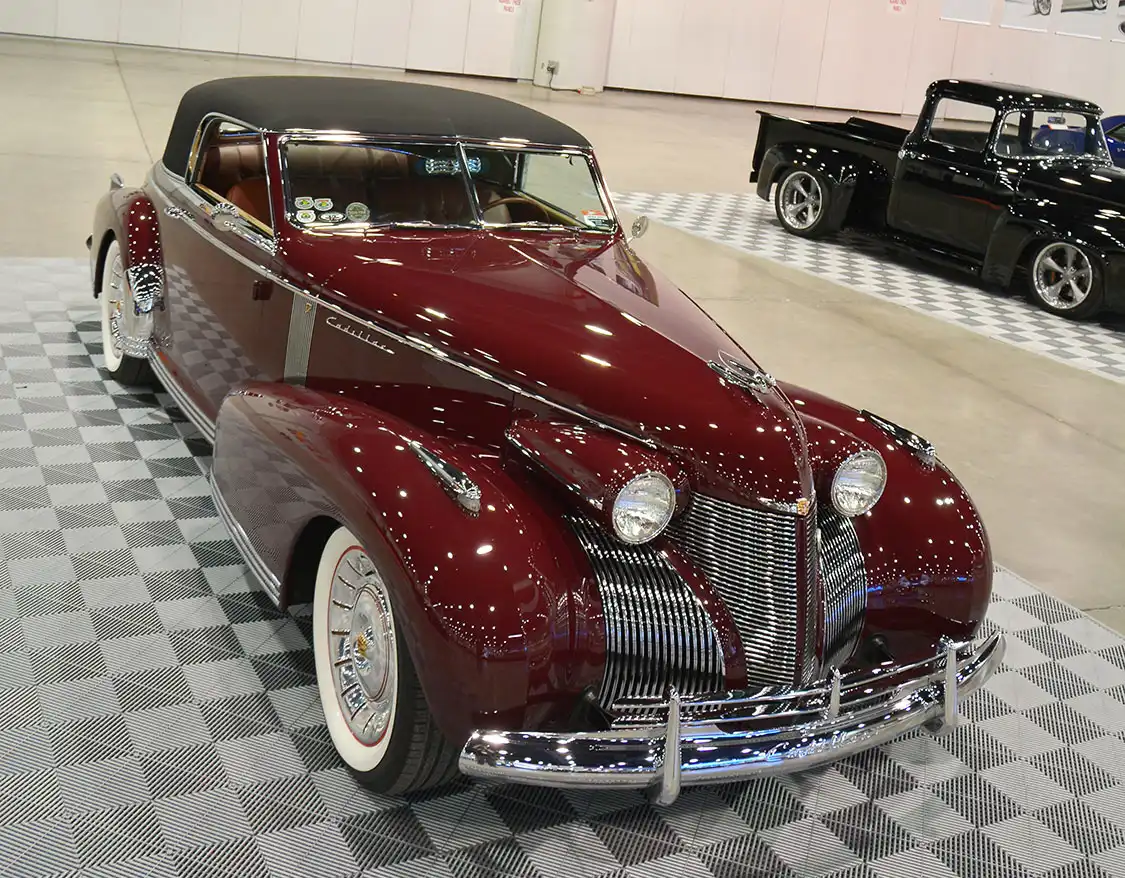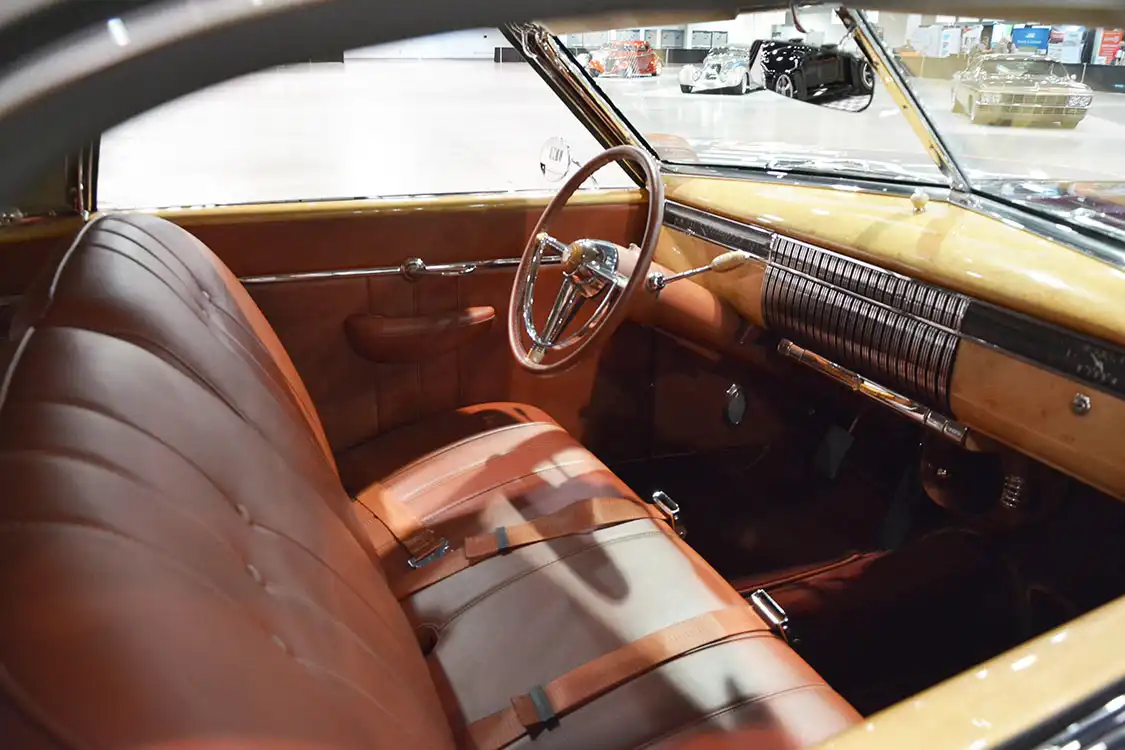CHIP FOOSE February 23, 2023 All Feature Vehicles
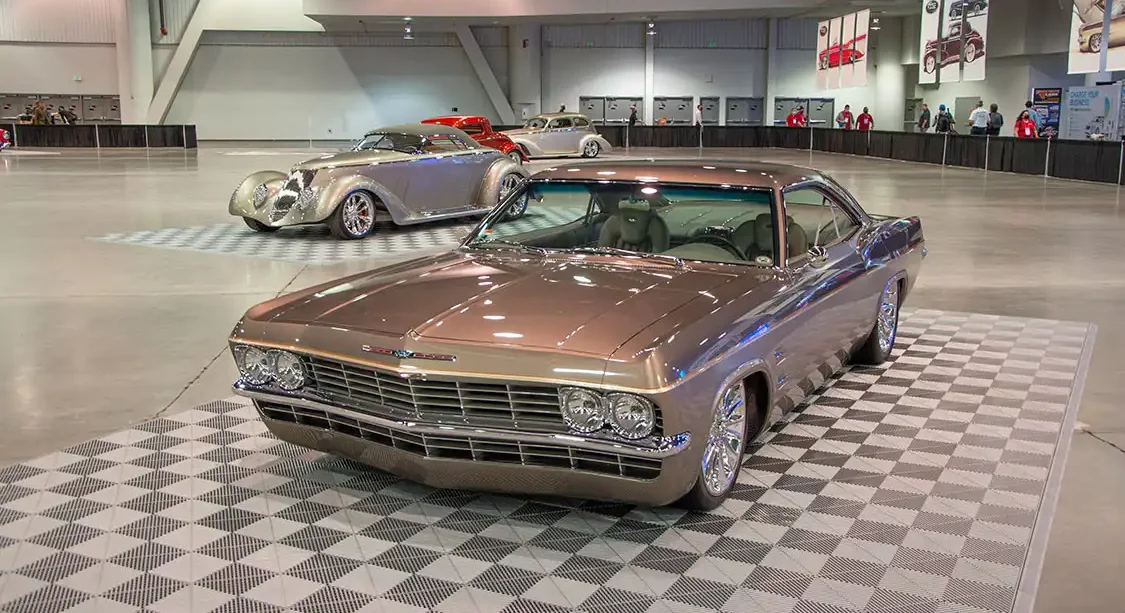
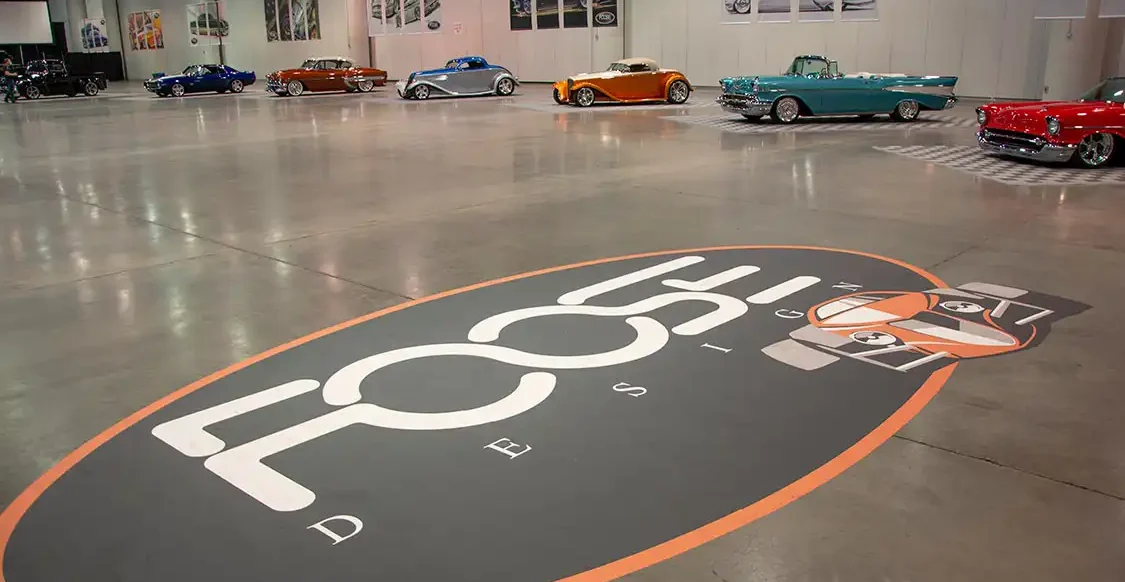
A customized 1932 Muroc roadster, Magnatude is actually a reimagining of a 2001 Foose design. Muroc’s were steel-bodied rollers with independent suspensions that were made available for sale by Kugel Komponents. Loosely based on the Boydster II, Chip Foose and hot rod illustrator Thom Taylor worked on the original Muroc body design. Marcel DeLay of Marcel’s Custom Metal in Corona, California, fabricated the productions bodies. Chip and Kugel designed the frames and Kugel component parts can be found throughout the vehicle. Only 20 total production vehicles were produced, 10 with fenders and 10 without.
Magnatude was named the 2010 Goodguys Street Rod d’Elegance.
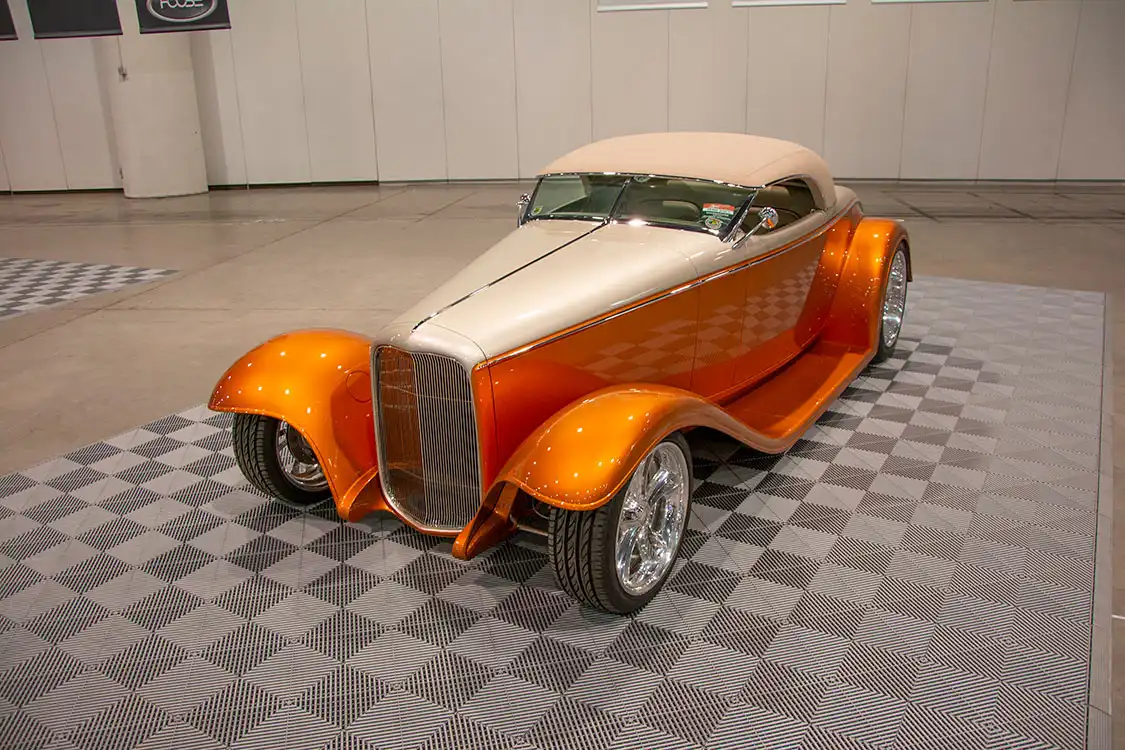
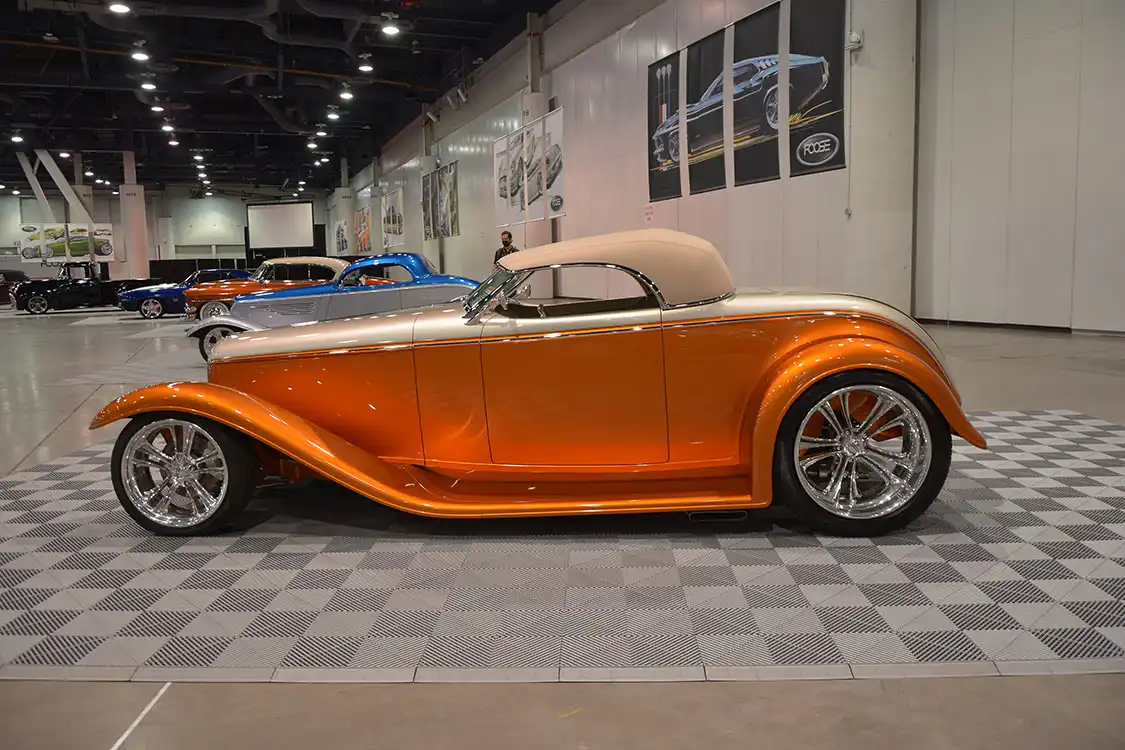
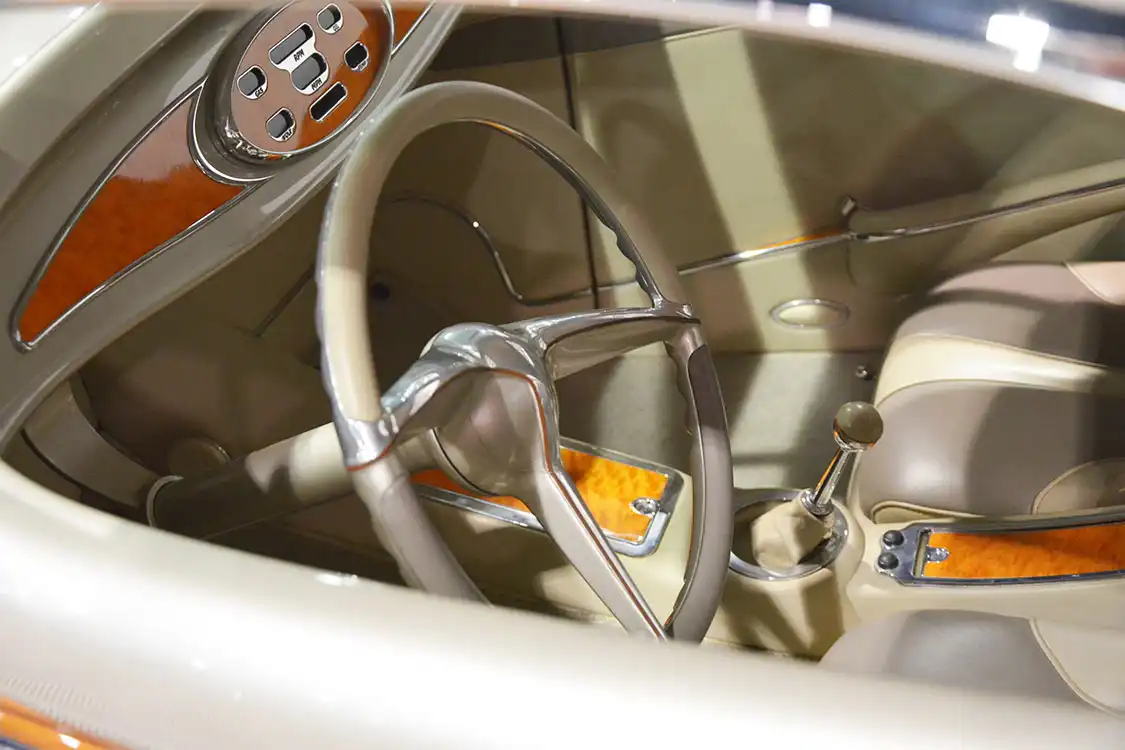
Chip Foose’s personal 1956 Ford F-100 is more than a truck, it’s a member of the family. Originally his father Sam’s shop truck, Chip bought the vehicle at the age of 13. He spent the next 3 years rebuilding and restyling the pickup, settling on a root beer brown paint color. It became his daily driver throughout high school and his early college years.
After years of use and storage, the vehicle eventually made its way to the front lot of the Foose Design shop where it sat for a few years. But the truck was never out of Chip’s thoughts. He drew sketches and concepts of how he would like to customize to the vehicle, if his hectic schedule ever afforded him the time.
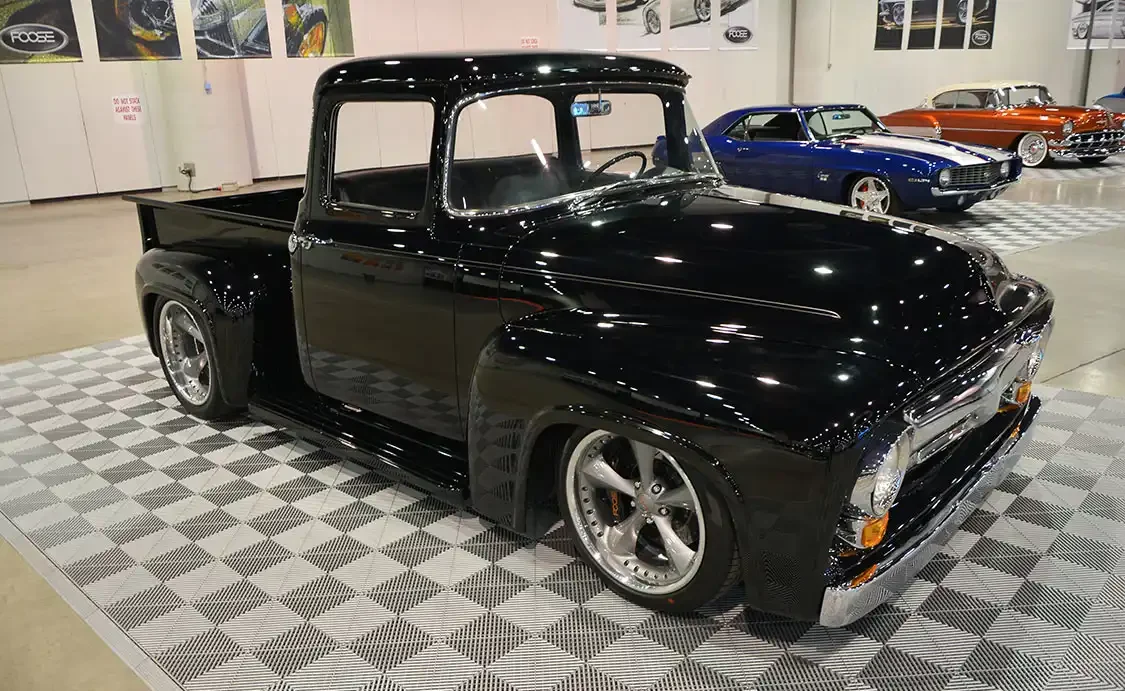
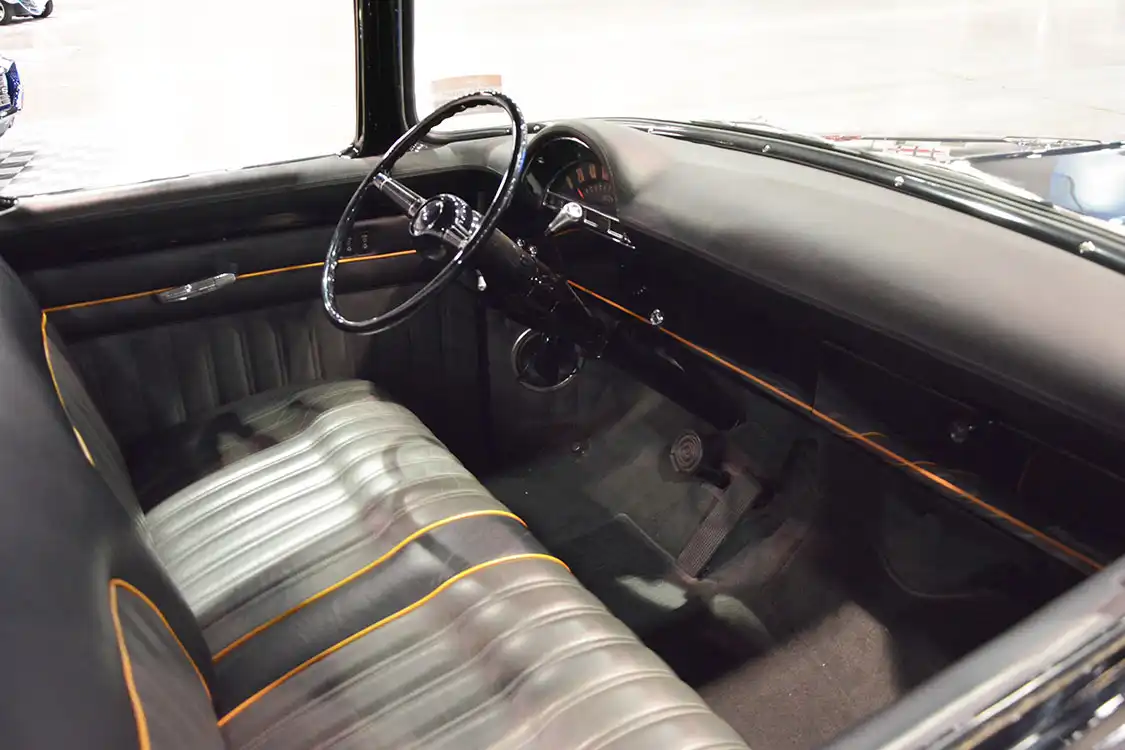
P-32 was a personal project of Chip’s, an homage to rat rods and the design elements of WWII era warplanes. Chip always wondered, what if a pilot returned from the war and missed his plane so much that he built a hot rod to emulate his old aircraft? So began his first thoughts related to P-32. Not until Chip had a break from the Overhaulin’ show was he able to customize this distinctive vehicle.
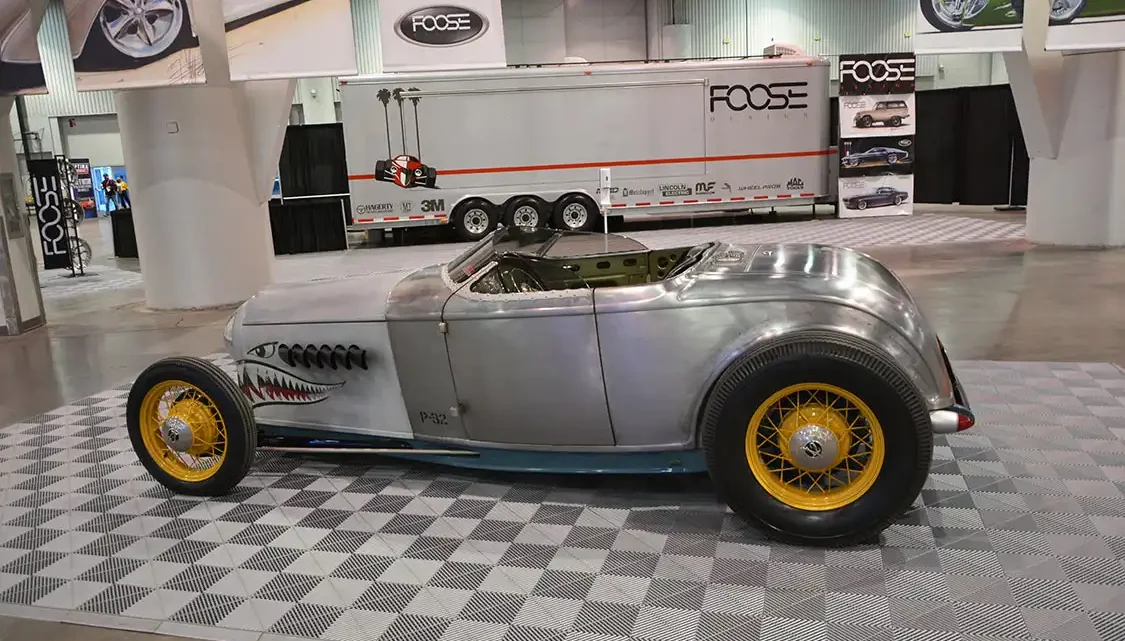
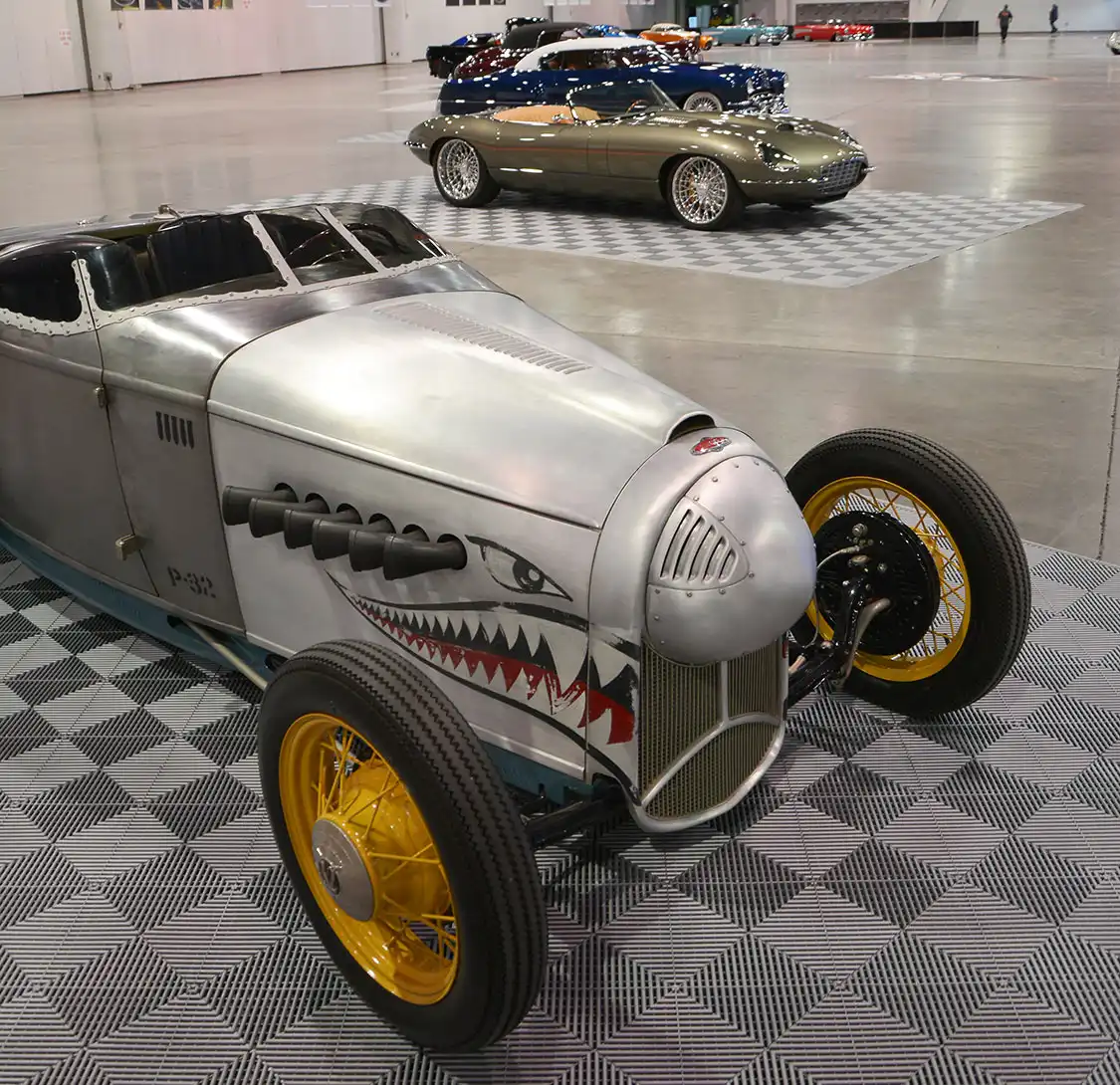
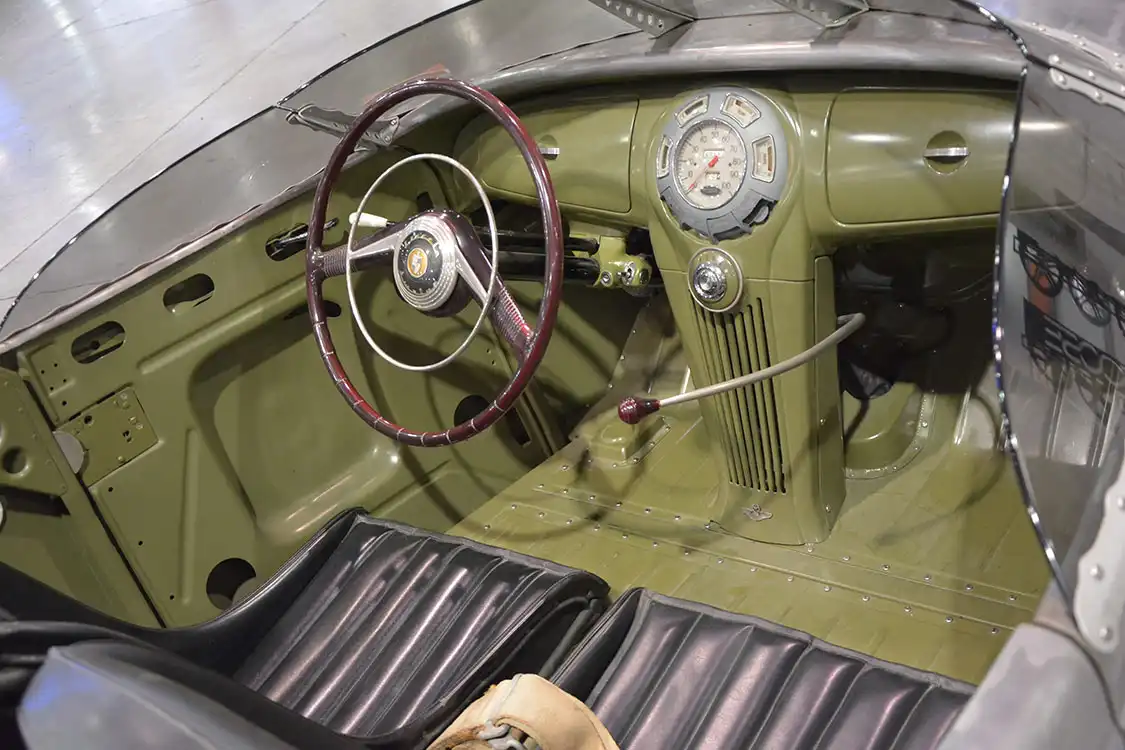
Starting with a ’32 Ford and a Brookville body, Chip made certain body mods in order to achieve a lower stance. He also lengthened the doors 2 inches, taking 2 inches out of the quarters. All the stitch marks, hammer marks and welds were left untouched, just as they did when they made repairs to warplanes being serviced during war time.
A flathead Lincoln V-12 provides the power and the exposed exhaust manifold tips are modeled after those of a P40. A custom nosepiece and olive drab paint meant to match aircraft primer continue the aviation theme. The interior even features bomber seats from an actual B-17!
This ’33 Ford Coupe has been completely rebuilt and customized. At Foose Design we receive vehicles in many different stages of development before we begin our work. When we took on this project some initial work had already been completed at another shop. Originally a roadster body by Speed 33, it came with an existing custom chassis. A number of modifications to the body such as adding a roof have taken place.
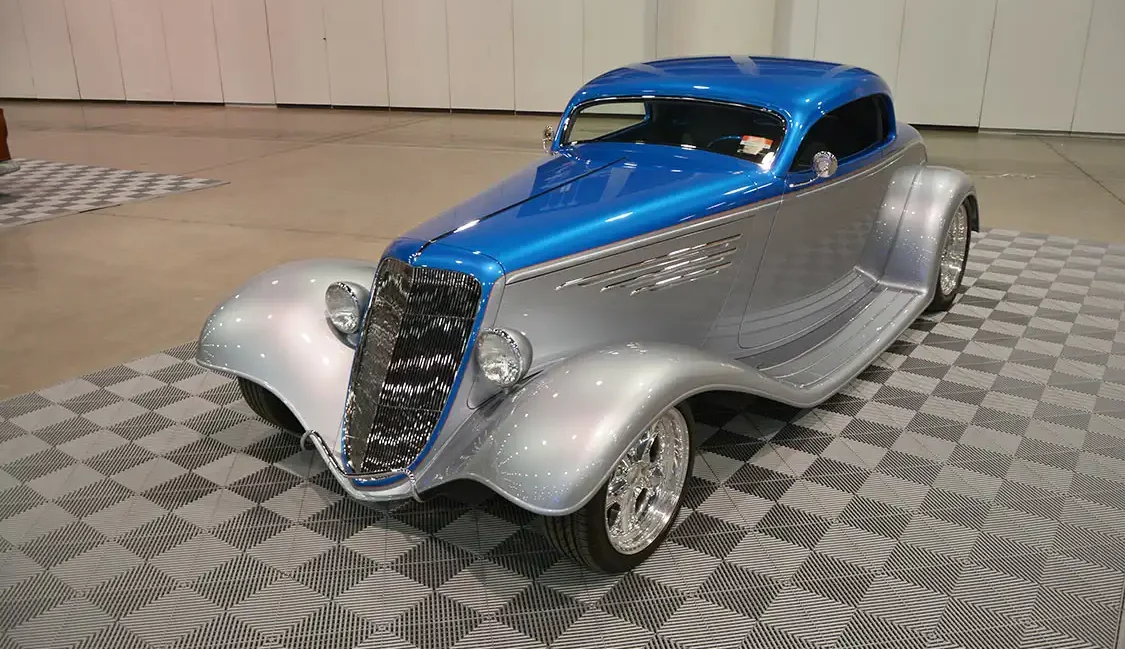
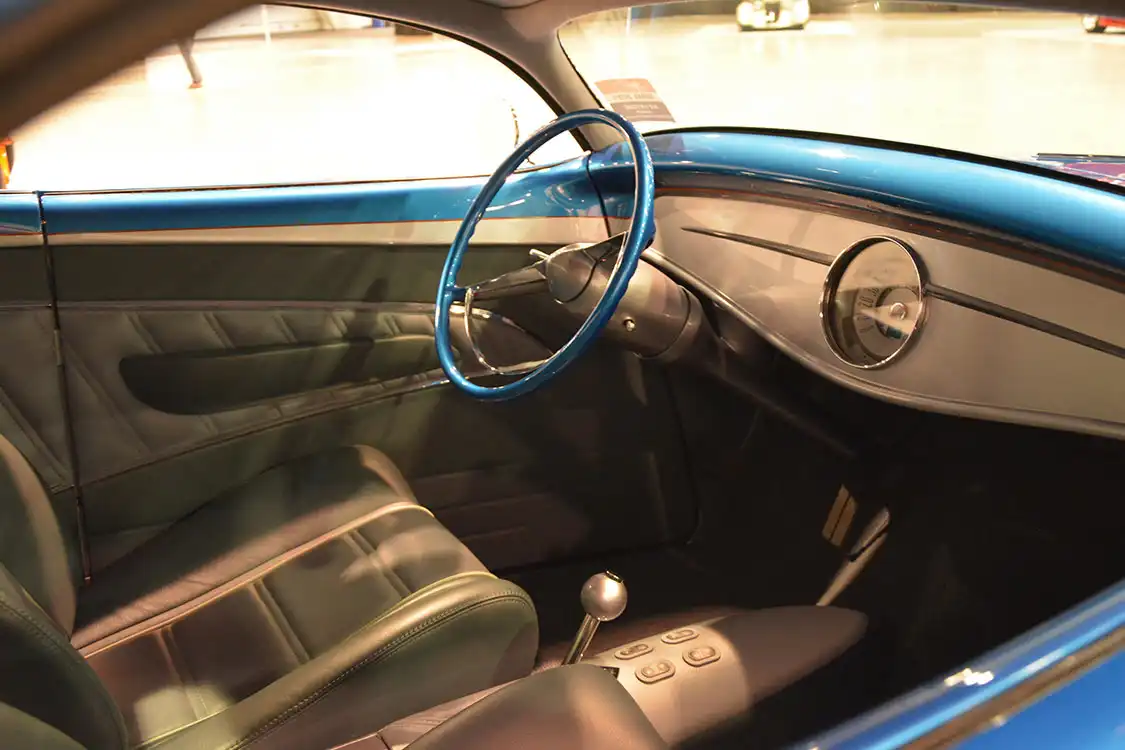
After taking delivery, the first step in the project was sending the car to longtime collaborator Marcel’s Custom Metal where they shaped the running boards and fenders. They also fabricated a new hood and new grille shell. Back at Foose Design, Chip designed a new custom roof line which was completed, shaped and added to the car by Marcel.
This ‘33 Ford Coupe has a LS3 Corvette motor built by Street & Performance and features the custom Foose touch throughout. Brand new interior, paint and one-off Foose wheels and many other modifications have been fine tuned by the Foose team. The chassis details have been refined with reshaped and reworked rails, new suspension mounts, new engine mounts and added filler panels.
The design of the Jaguar E-type is timeless and beloved, but that doesn’t mean ol’ Chip Foose can’t give it a dash of something a little extra. One particular customer wanted a classic ‘74 E-type roadster like none other, and Foose Design spent 2.5 years bringing it to life before revealing the project at this year’s SEMA show.
Revered in its stock form, the concept was to build upon that legacy of subtle elegance and create an understated, yet high-performing, two-seated gentleman’s roadster.
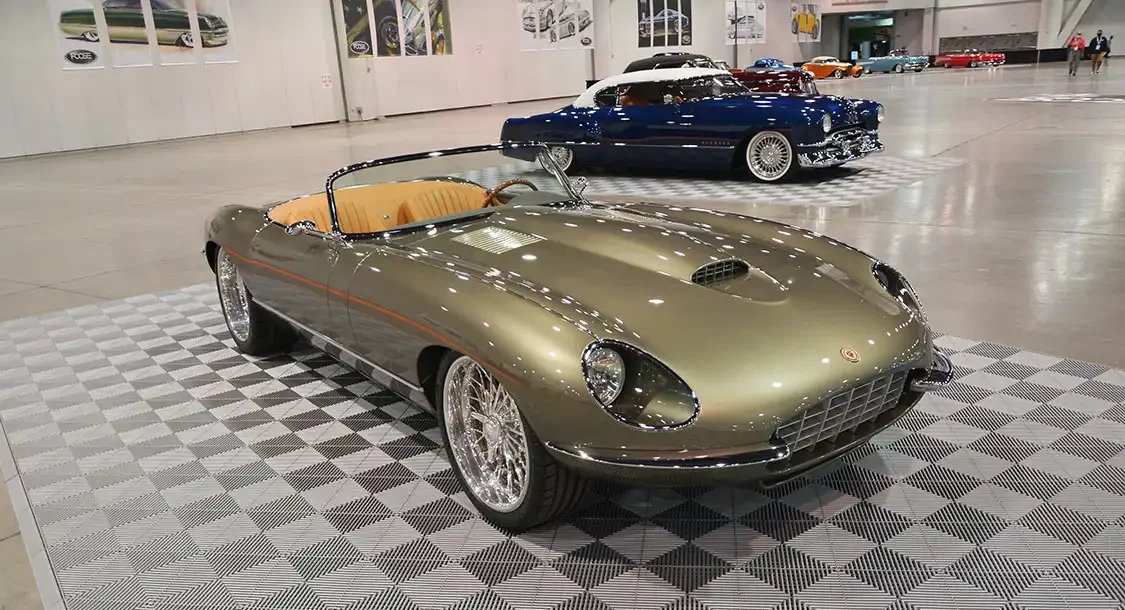
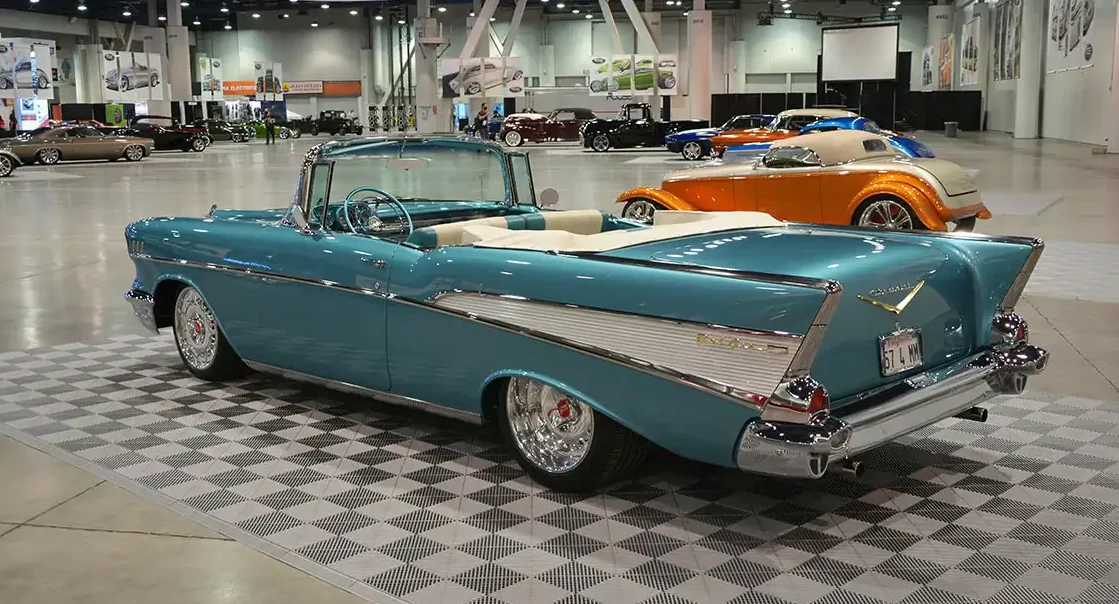
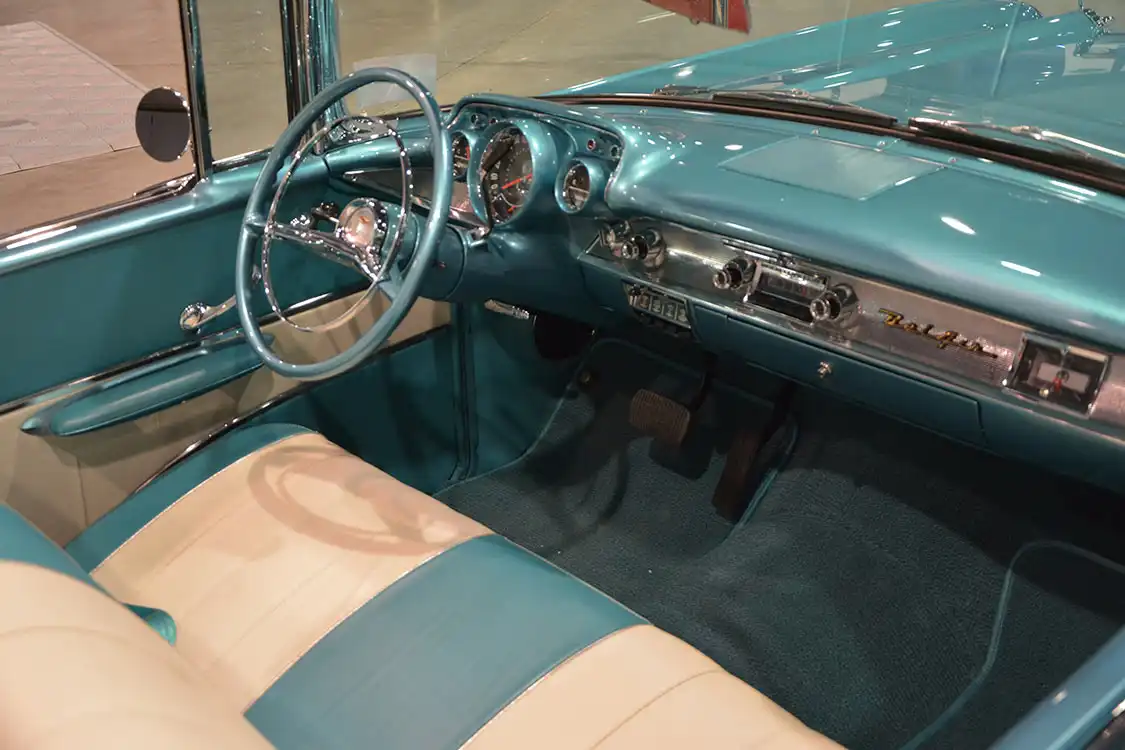
Grandmaster achieved critical acclaim, winning the 2002 Ridler Memorial Award, which is presented to the best first time shown new entry at the Annual Detroit AutoRama and is considered the highest profile award a designer can earn. It was the first time Chip and Foose Design achieved this great honor.
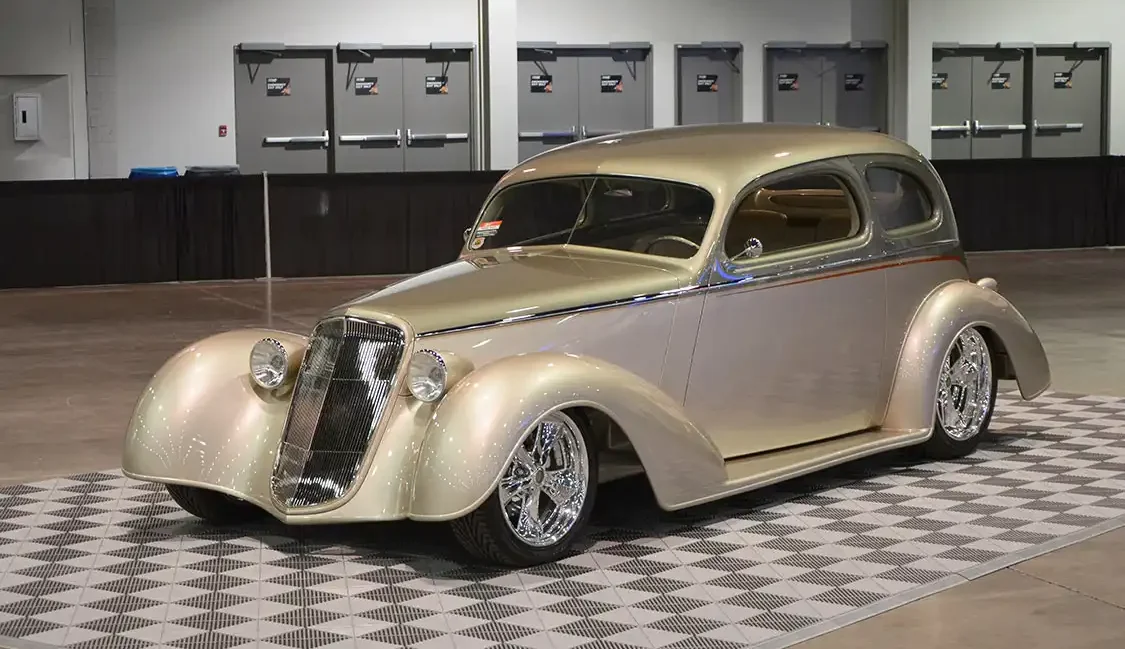
Based on a 1935 Chevrolet Master Two-Door Sedan, the body was completely retailored and hand crafted from steel. Only parts of the fenders and small portions of the roof remain from the original car. A precise 1/8″ body gap can be found between every body panel, including the underbody details.
A unique two-tone paint scheme features a custom BASF mix of Millennium Jade over Chip Silver, separated by side chrome trim, Saffron Pearl pinstripe line and Orange Pearl accent line.
Stallion has a colorful history for an award winning show car. Owner Ron Whiteside and his brother actually used to drag race the vehicle at race tracks during their teenage years. Ron managed to hold on to the all steel, original 1934 Ford coupe for 5 decades until he sought out Chip Foose to build him the vehicle of his dreams.
Some of the numerous body modifications include a chopped roof, a smoothed cowl, a lengthened hood and reshaped fenders. A custom chassis was fabricated and a custom 4-wheel independent suspension added. Stallion was finished in a distinctive copper orange hue of BASF paint, personally mixed by Chip.
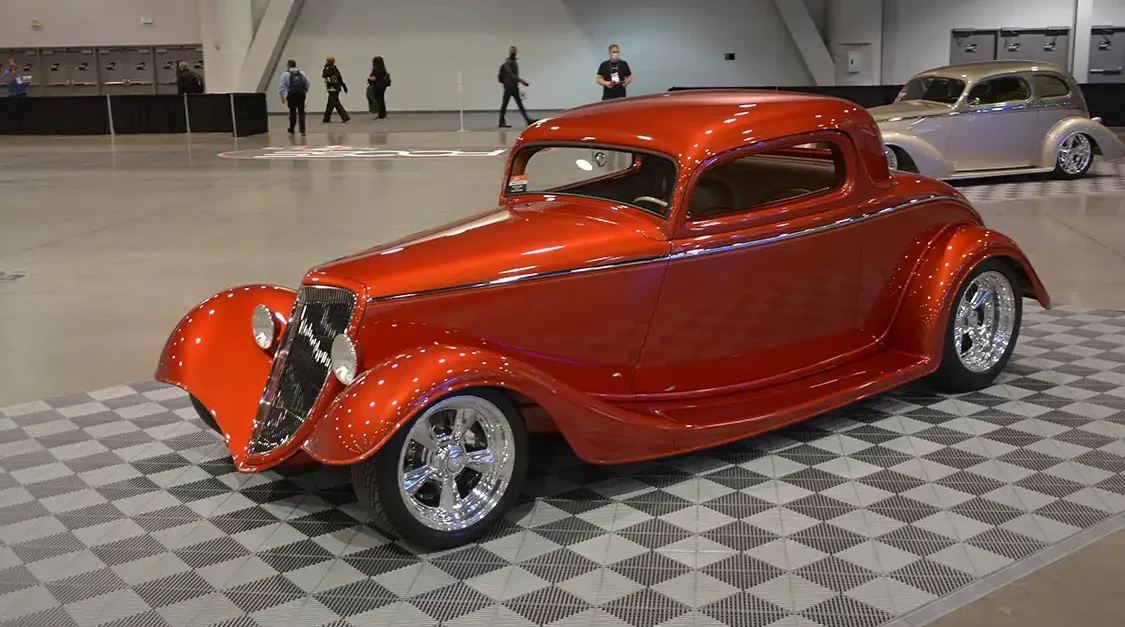
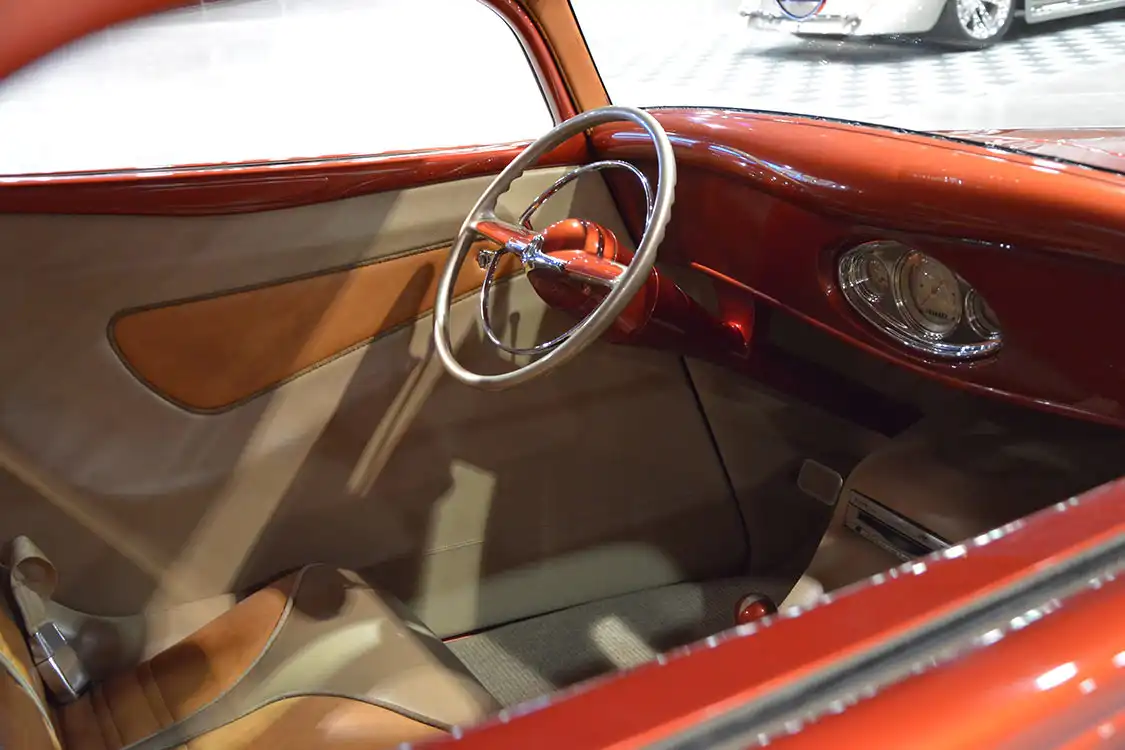
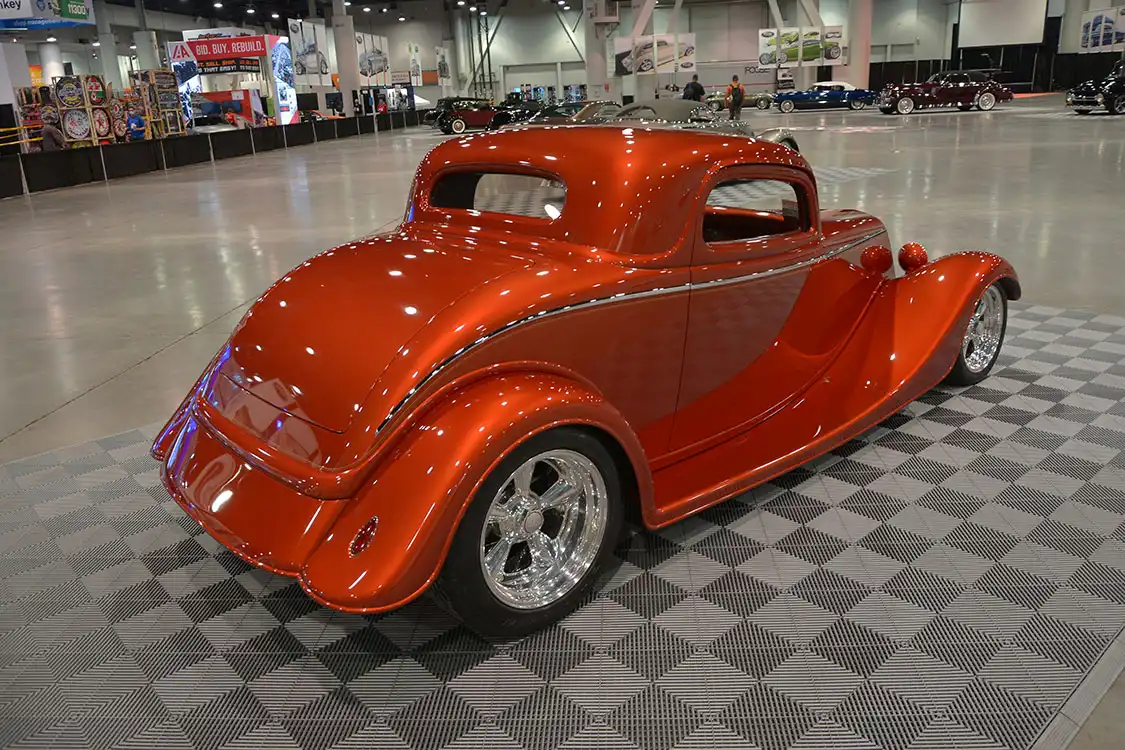
Although the vehicle began as a 1934 Ford, ultimately it was reimagined as a Mercury Monarch. The Mercury brand wasn’t founded until 1939, when it was launched as an entry level luxury car brand. However, Chip formed the Stallion from the perspective of what a Mercury vehicle might have looked like should the brand have been around in ’34. He wanted to honor that design process, which is why you will find subtle Mercury branding elements throughout the vehicle, such as the Mercury man emblem on the engine plate. This is why you will sometimes see the vehicle referred to as a 1934 Mercury Monarch when in fact, no such vehicle ever existed.
In 2003, Stallion received the celebrated Ridler Award at Detroit Autorama, the second such win for Chip and Foose Design.create an understated, yet high-performing, two-seated gentleman’s roadster.
You are looking at the Impostor. This 1965 Chevy Impala is not what it appears, it is a C6 Corvette in Impala wears. A 2009 Corvette was purchased brand-new from a Chevy dealership mere blocks away from Foose HQ. To make it all fit, the chassis of the Corvette was stretched over 7” and the Impala body was shortened a total of 14”.
The theme for this build is “what if” Chevrolet’s Corvette studio modeled a muscle car in 1965 as well as the sports car we all know and love.

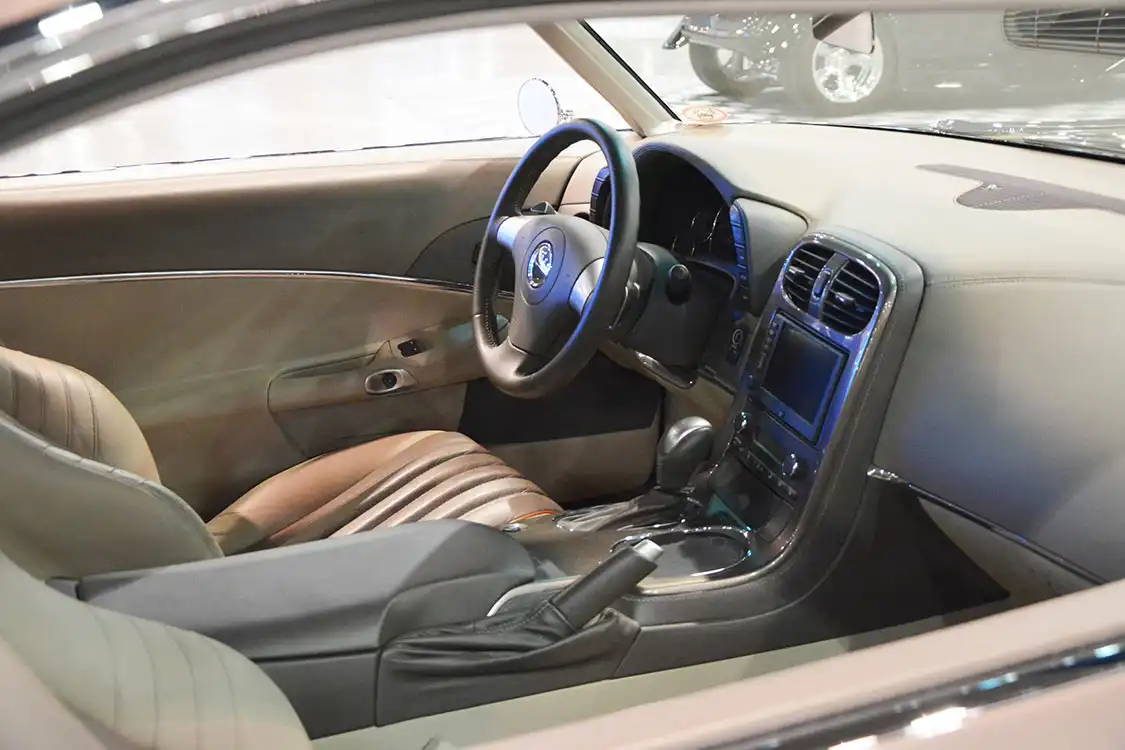
Hemisfear is the culmination of a 16 year personal dream for Chip. In 1990, during his senior year at the prestigious Art Center College of Design in Pasadena, California, Chip and his classmates were presented with a Chrysler-sponsored graduation project. They were to design a vehicle for a niche market. Part supercar, part custom and part hot rod, Hemisfear is perhaps the most renowned Foose vehicle.
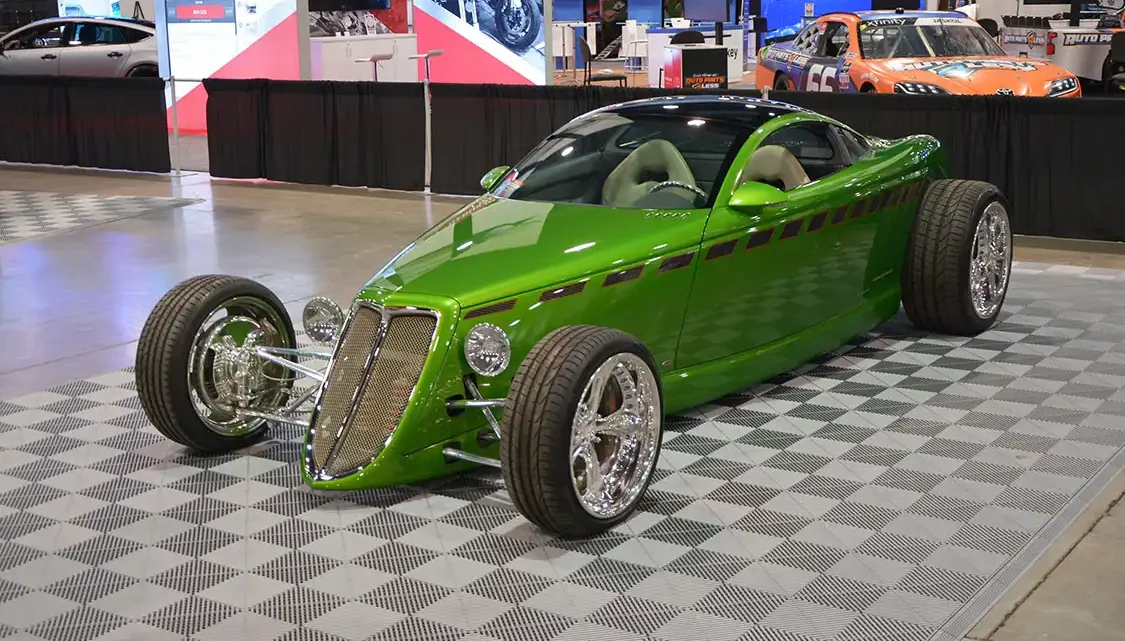
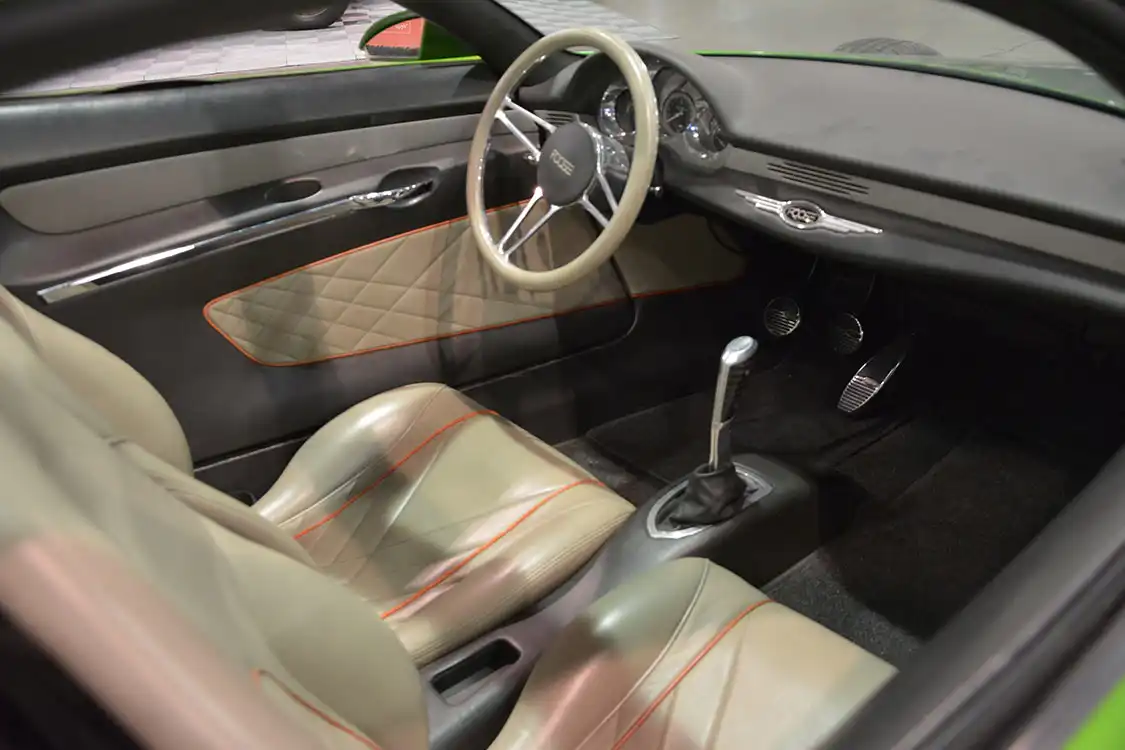
A ’32 roadster for the new millennium, 0032 is a historically significant Foose vehicle, with the unique distinction of having been customized by Chip not once, but twice!
First brought to life as the yellow Boydster II, a fully fendered roadster designed by Chip while President at Hot Rods by Boyd, the original was named America’s Most Beautiful Roadster back in 1996. Its sleek, powerful lines established the “Boyd look” and gained Chip design acclaim. Ultimately, the vehicle found its way into the hands of collector Chuck Svatos, who sought out Chip to restyle the roadster in black. Chip had just opened Foose Design and was pleased to take up Chuck on his offer. He also let him in on an ironic little secret, Chip’s original sketches envisioned the Boydster II in black.
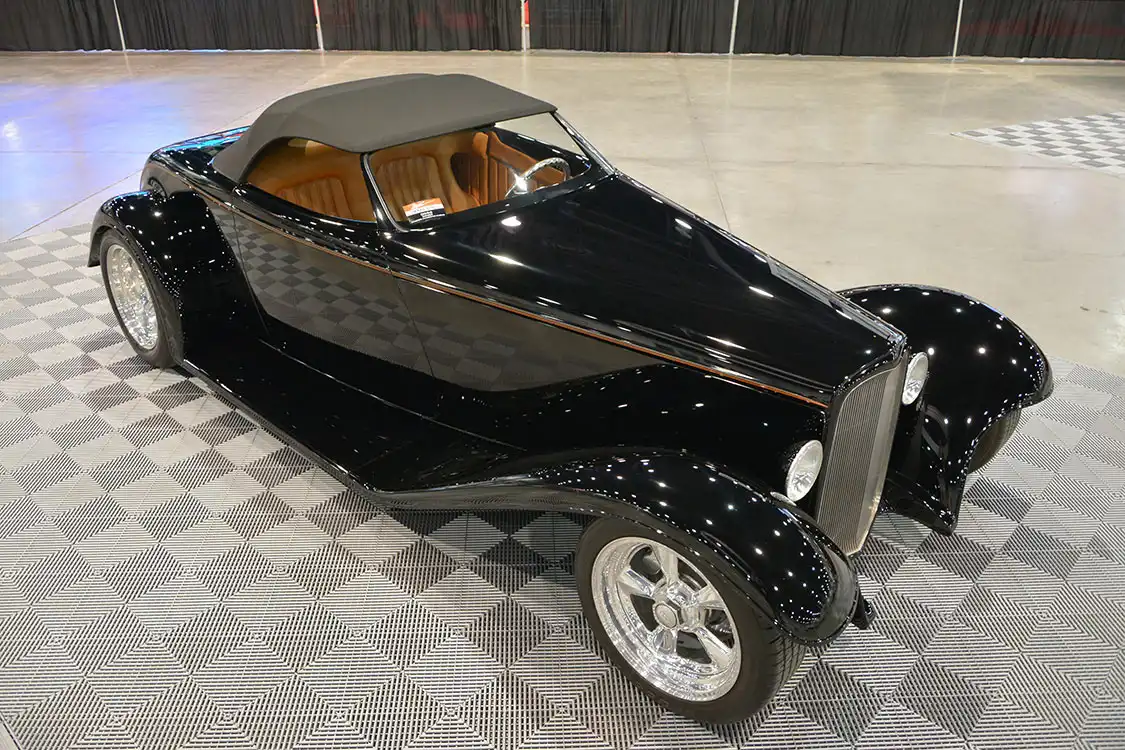
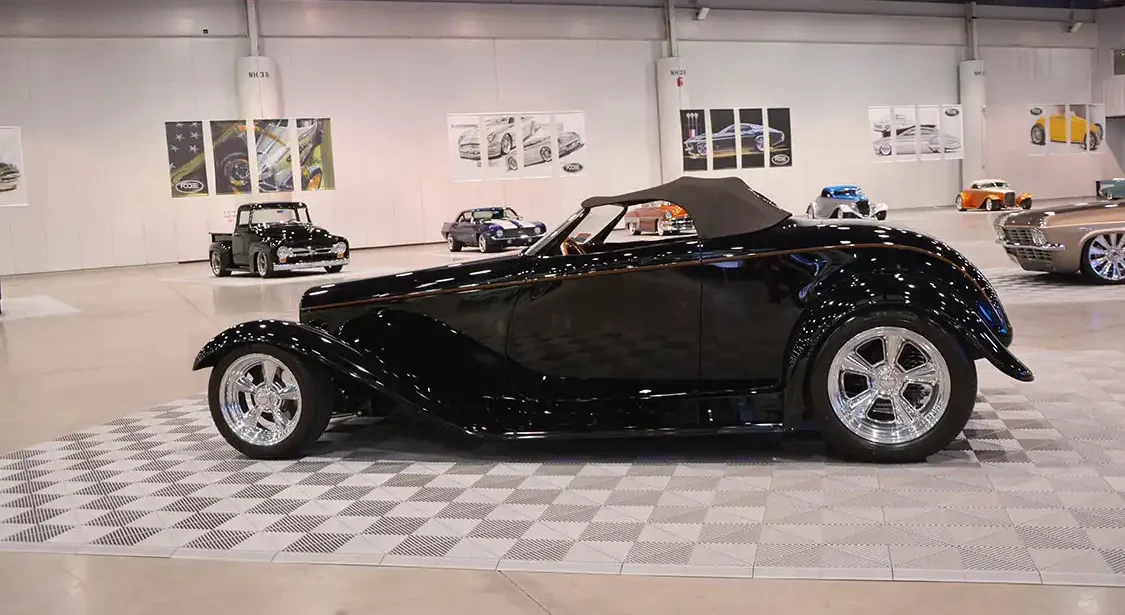
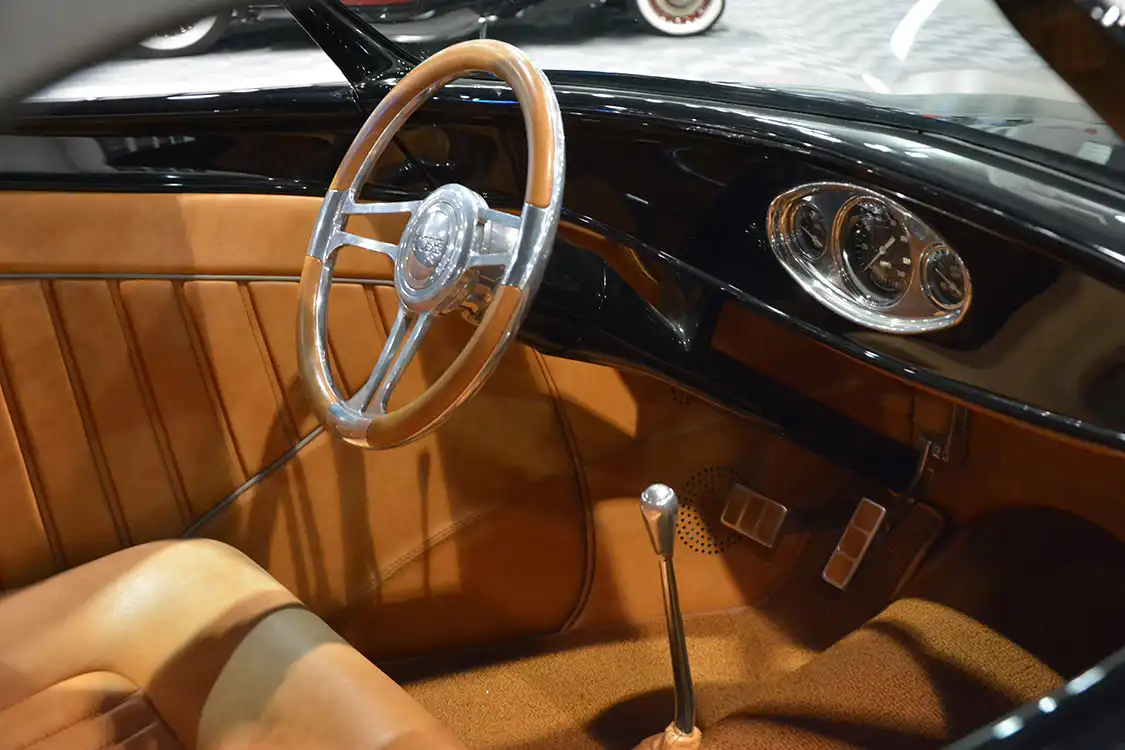
While leaving the body lines untouched, Chip focused on new black paint, distressed leather interior and new wheels to further realize his original vision. A new removable top was also designed and constructed. When all was done, the newly named 0032 was again named America’s Most Beautiful Roadster, this time for the year 2000.
This story doesn’t end after the customization was complete and the awards won. Years later, owner Chuck Svatos returned the vehicle to Chip in exchange for the customization of a ’32 Ford 3-window, which ultimately became Lil’ Foose Coupe. Chip was able to sell 0032 to the Petersen Museum, allowing him to purchase a building in Huntington Beach, which would become headquarters for Foose Design. 0032 is still owned by the Petersen Museum, located in Los Angeles, and is currently on display.
They say some of the best ideas begin as doodles on a napkin. Well, the first concept sketches of the Impression were no different. During a dinner with Ken Reister, armed with only a pen and without his trusty sketchpad, Chip reached for the closest item available, his dinner napkin. So began a 7 year odyssey that would lead to the creation of perhaps the finest vehicle to come out of Foose Design.
The objective was to create the perfect styling for a mid-30’s roadster. The result was a unique Foose design, a sleeker and longer version of the stock 1936 & 1937 Fords. Impression became one of the rare winners of both America’s Most Beautiful Roadster and the Detroit Autorama Ridler Award, two of the highest forms of praise for any custom automobile.
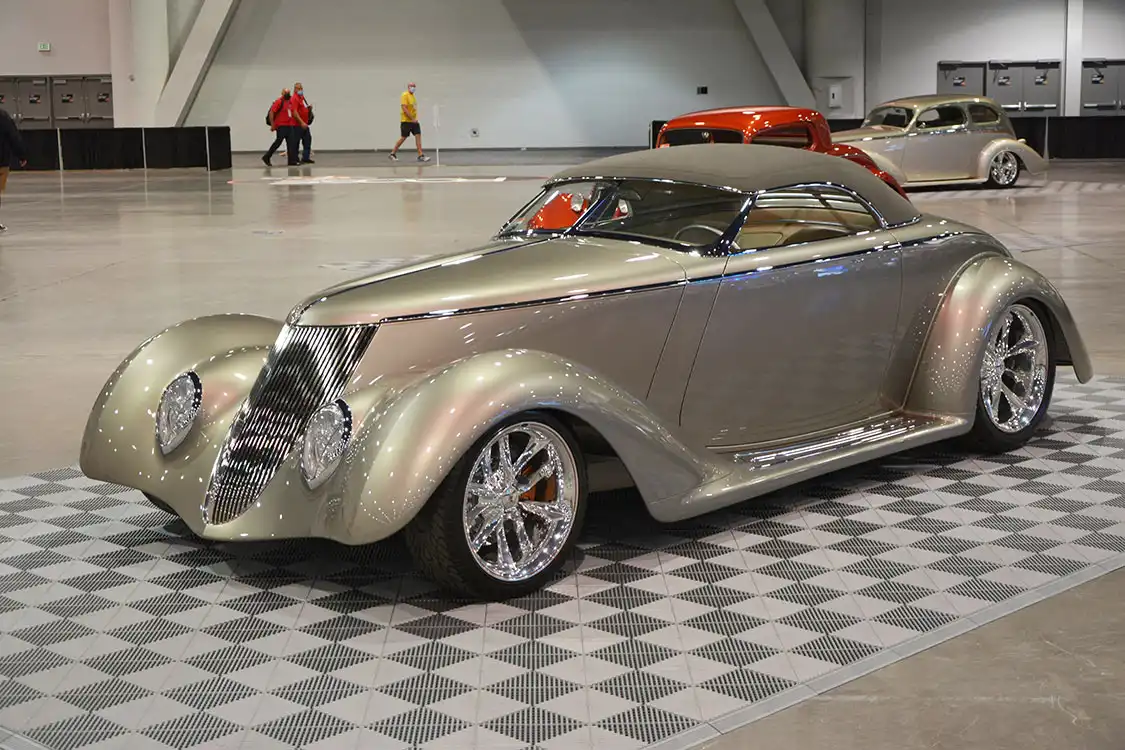
After their dinner meeting, Chip refined the sketch and sculpted a 1/4 scale model of the design out of clay. Shortly thereafter, work began on the custom chassis, as the wheel base, ride height and suspension components were all established. Next, a mold was pulled from the clay model, which served as the template for the fabrication of a full-size wooden buck to shape the metal over. As assembly and metal forming continued, the timely fabrication process of the parts and components was started.
Impression was not meant to be your average show car, it contains over 4,000 individual hand built parts that were machined and fabricated. Brackets, covers, suspension pieces, trim, mirror, door handles and pedals were just some of the pieces that received the highest level of attention. In fact, only 3 OEM parts can be found on the vehicle; the engine, the transmission and the center section of the rear end. Everything else is handmade, even the tires were custom molded as blanks with a handcut custom tread pattern.
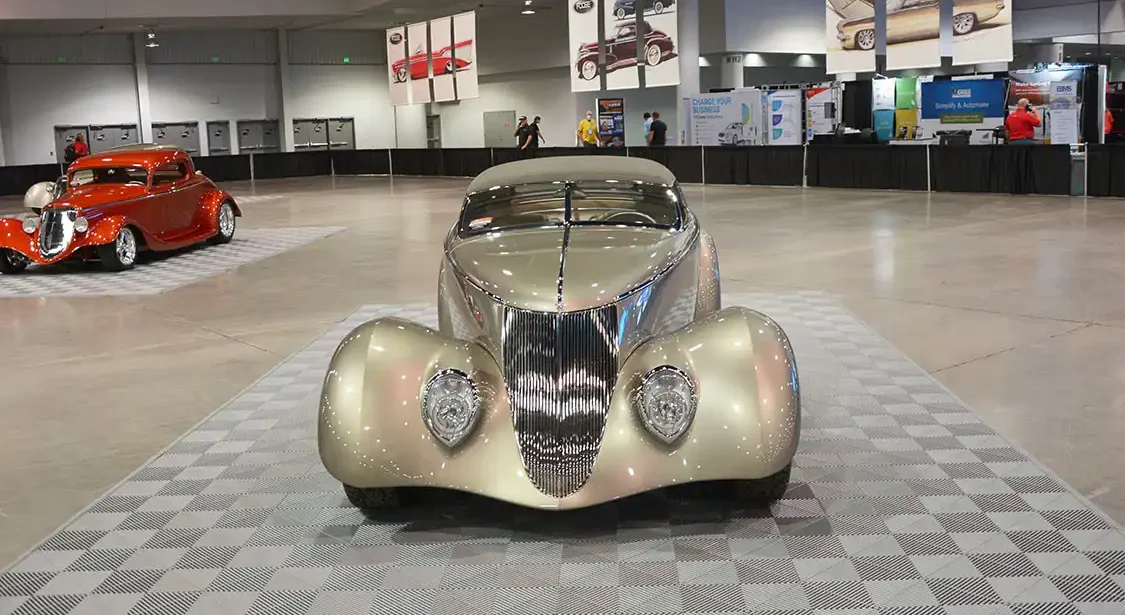
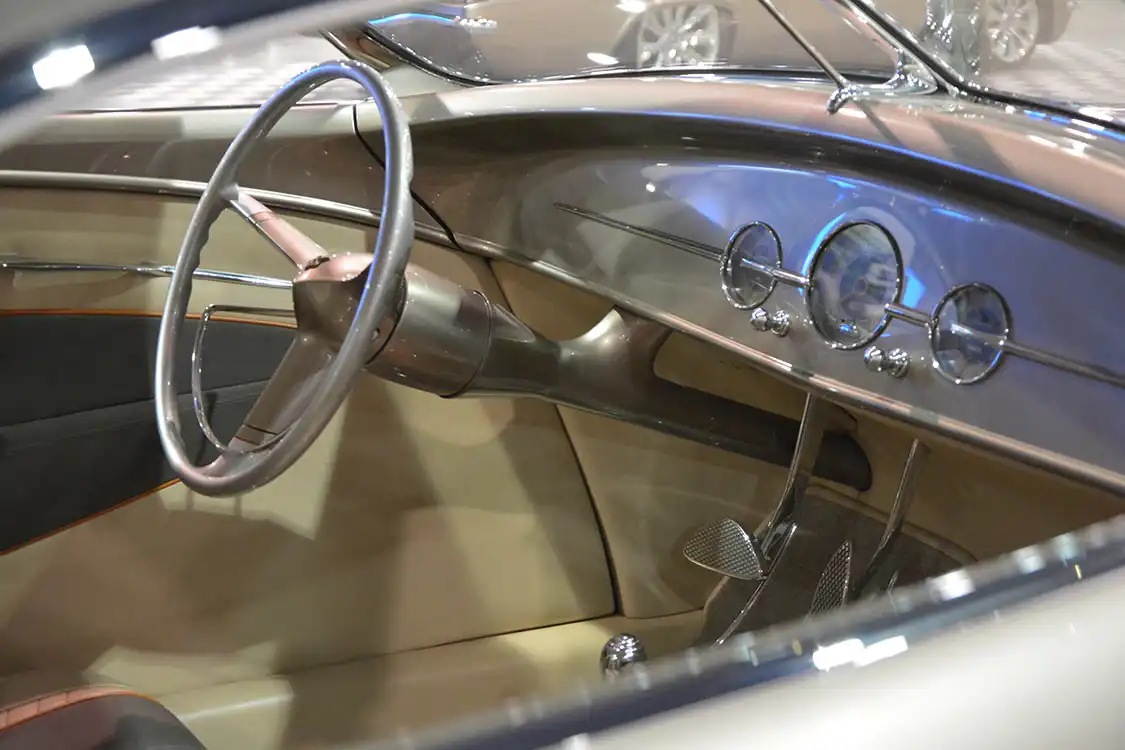
More time was spent on the underside of the vehicle than on the top exterior. The 1/8″ gap between panels was maintained throughout the undercarriage. Brake lines, components and wiring were all hidden underneath. All mechanical fastners have been covered our shrouded, even the shock mounts on the A-arms have custom caps.
Some of the more impressive design elements are also the most subtle. A repeating theme found throughout is the presence of soft-sided triangles. That shape can be found on the pattern of the pedals, the cross-section of the A-arms, the windshield posts, the rear exhaust, the interior accents, the wheels and the side trim, to name a few. Also, you will find the iconic Ford V8 logo not only above the grille and on the center cap of the wheels, but as an illusion created by the headlights custom lens and metalwork.
Truly a masterpiece of hot rod design and elegance, Impression still appears at various car shows across the country. It serves as a benchmark of success for all the hard work done at Foose Design.
This is a historically significant vehicle in Chip’s illustrious career. Beginning with a 1948 Cadillac, Eldorod was originally completed at Hot Rods by Boyd’s. In fact, it was the very first car Chip designed at Boyd’s when he worked there full time as Chief Designer in the 90’s. It was also the last car to be produced by Boyd’s before it went bankrupt in ’98. The new owner of the vehicle, Chris Andrews, got in touch with Foose Design as he heard Chip had a different initial vision for the project. For example, Chip had planned to paint the vehicle blue, not the maroon color it ultimately received. Chip found his original concept sketch of the vehicle and set to work executing his original design.
Eldorod was repainted in the brilliant blue. The front and rear bumpers were also completely redesigned. Other upgrades include new Carson top, new grille and grille insert, new leather interior, new roofline with chrome trim and recut faux-white wall wheels.
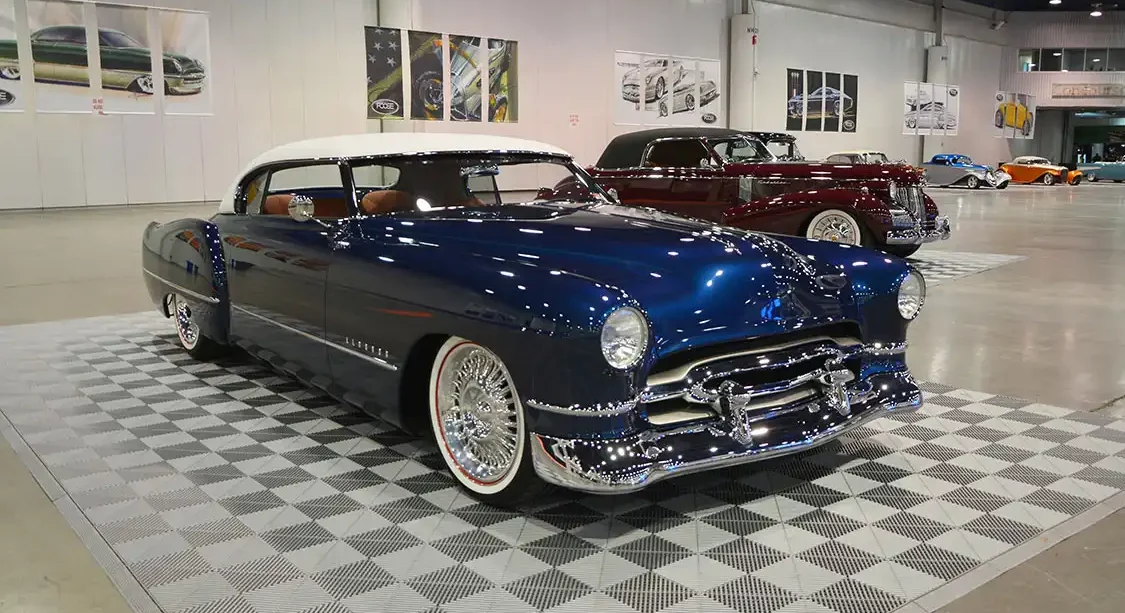
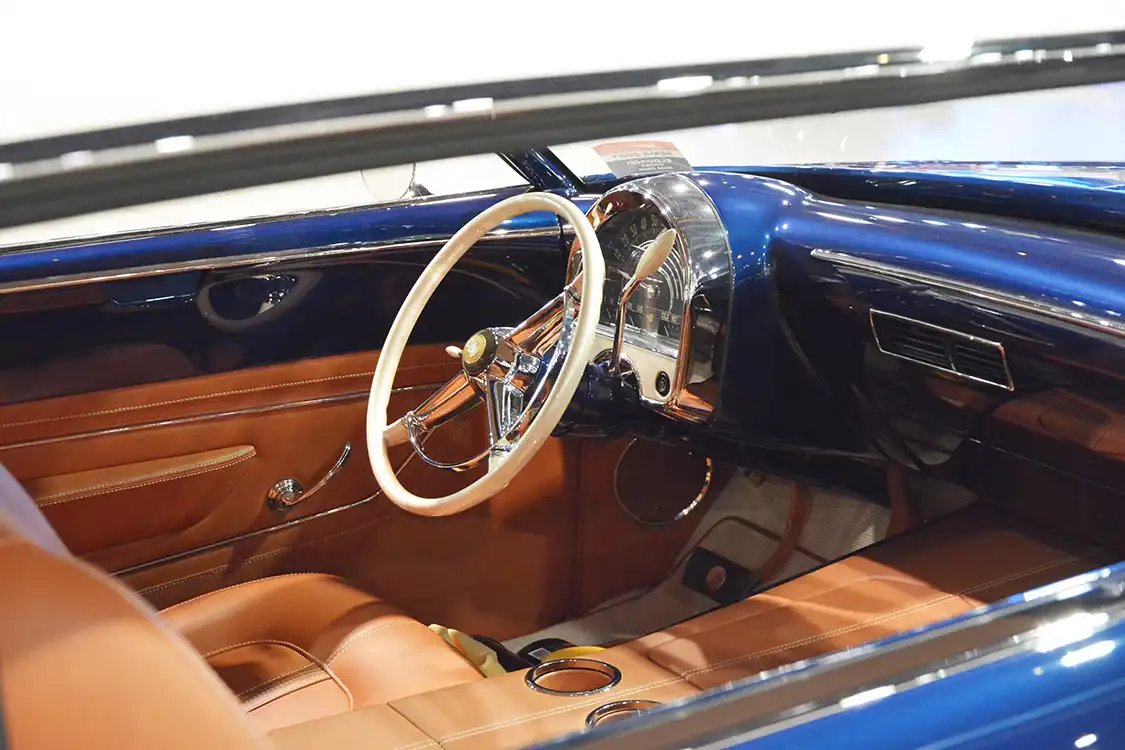
The Styling Section, and Art and Colour Studio at General Motors were created, and headed by Harley Earl (1893-1969). From the late 1920s, and on into the 1950s Harley Earl headed the design evolution at GM. It was under Earl’s guidance that the utilitarian design of early automobiles evolved into rolling Art of the 30s, 40s, and 50s cars we love today.
